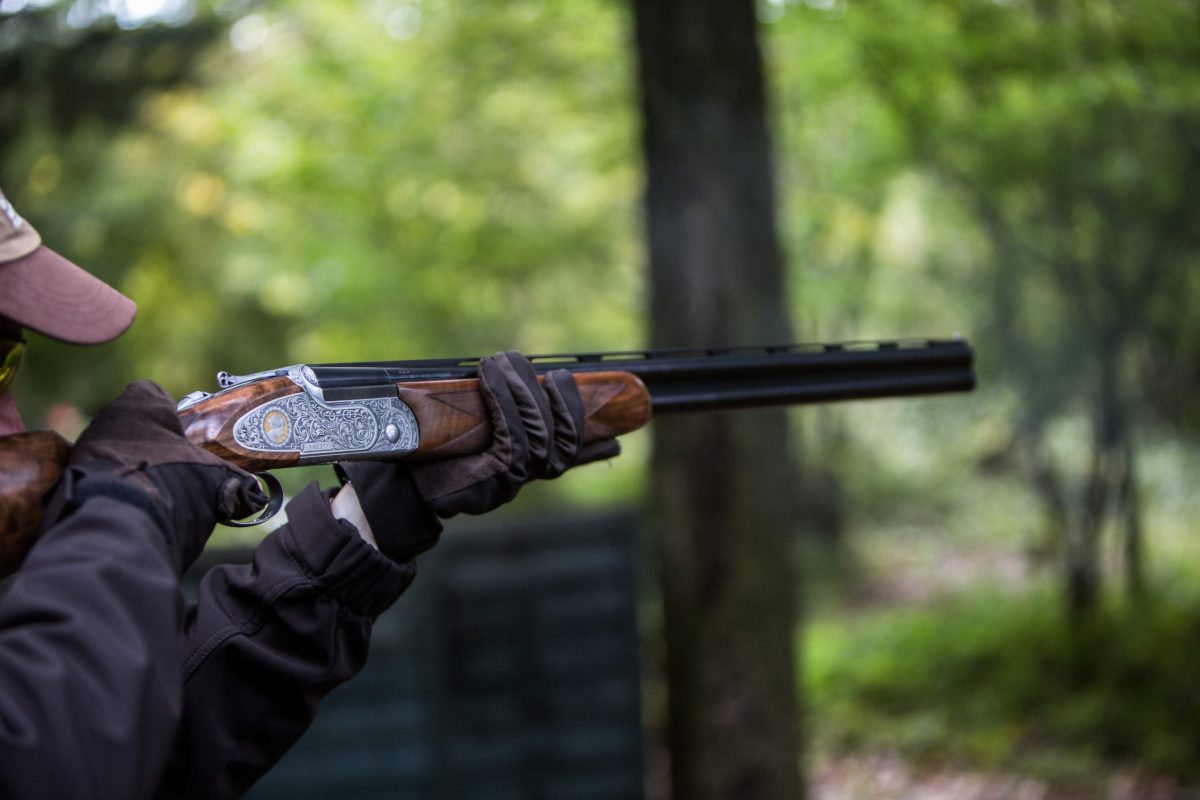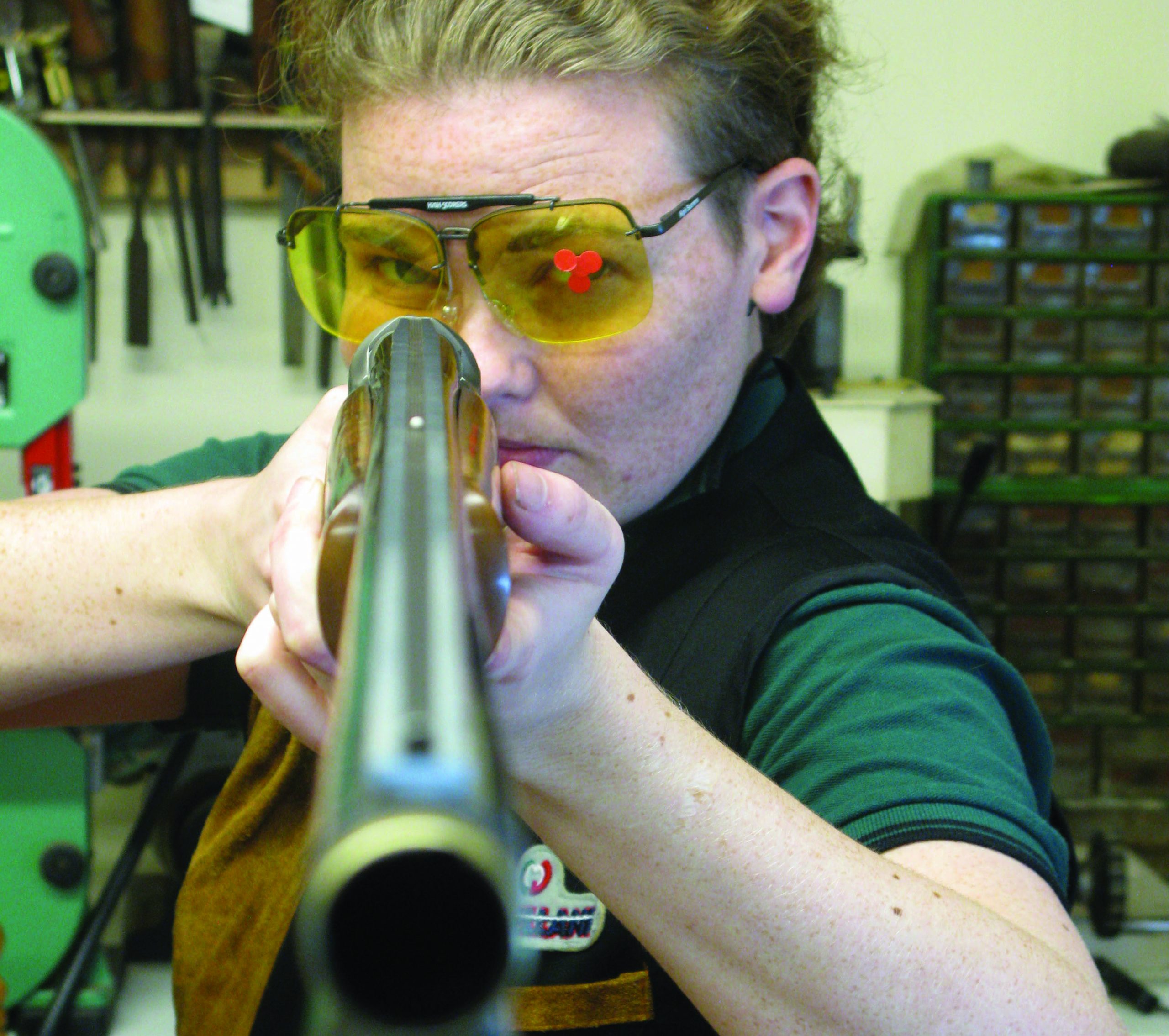Win CENS ProFlex DX5 earplugs worth £1,149 – enter here
Shotgun ribs – what are they and why are they there?

When shooting, we keep being told to look at the target, so what’s the point of the rib? Well, no matter how hard you try, the rib will still be in your peripheral vision. How much you are aware of the rib varies for each shooter but, believe it or not, a change in the amount of rib that you see can have an effect on your shooting.
The rib shouldn’t be a distraction or a hindrance and there are different ways to prevent glare from the rib. Most ribs will be machined or chequered on the top surface. Some have crossed lines, some have straight. The idea is to stop the reflection from the sun off the rib. Some side-by-sides will have flat metal ribs, but will be concave in their construction, again to stop the glare. The machining also helps dissipate the heat rising from hot barrels by giving the rib a bit more surface area and act a bit like small cooling fins.
Ribs are either soldered or brazed to the barrels. Brazing allows a hot bluing process and soldering a more traditional bluing process. Side ribs can be solid, which is common on game guns because it helps stop dirt and water getting in between the barrels.
Ribs on a sporting shotgun can be ventilated and, although most think it may help keep barrels cooler, it is more likely to keep the weight of the barrels down.
It is possible to have no side ribs, although some connection at the muzzle is needed to keep the barrels true. Again this is only done to keep the weight of the barrels down.
Some guns have no top rib, just a small ramp at the end with a bead on it. This first occurred when they started making over-and-unders and was used in an effort to match the light weight of a side-by-side. I would imagine that on ribless guns like this, there would be a great deal of glare from the barrel. A lack of confidence in the placement of the barrels meant ribless guns did not become mainstream, so they are quite rare.
Game guns
A game gun is more likely to have a solid mid rib and top rib, that is without ventilation holes. The ‘solid’ ribs are actually more than likely to be hollow to make it strong and light.
It is also more likely to have only one bead at the end and it is common for a game gun to have a narrow rib compared with a sporter and is more likely to be tapered.

A Purdey Sporter with solid ribs
A tapered rib will be marginally wider at the chamber end of the barrel, becoming smaller towards the muzzle. This is meant to draw the eye towards the target, possibly on a subconscious level, but if you have trouble keeping focus on the target, you should try a tapered rib.
Once the tapered rib was in production, it was only a question of time before someone made a reverse tapered rib, where the rib is wider at the muzzle than at the chamber. This is designed to draw your attention to where the barrels are in relation to your target.
Sporting
Sporting shotguns are more likely to have a ventilated mid rib and top rib. As mentioned, this is mainly for weight purposes as well as heat dissipation. The top rib is likely to be wider giving the assumption that sporting shooters will have or want to have a greater awareness of where the barrel is.
With sporting guns having wider ribs, an effort has been made to keep weight to a minimum by using alloys and, more recently, carbon fibre.
It’s personal: choose a rib that suits you
The weight of a set of barrels can have a material effect on the balance and handling of a shotgun, so every component of the barrel, including the ribs, are important.
On some competition guns you will see an adjustable rib. This allows you to alter the shot placement of your shotgun, but only if you can move the front of the rib. If you move the back of the rib, the comb will have to be adjusted to see over the rib. As such, the point of impact will change. This is a relatively new thing.
Beady eye
You will often see two beads on the top rib. This allows the shooter to have the beads in line, giving a ‘flat’ shooting gun, or, by raising the comb height, the shooter can see the beads make a figure eight, which means the gun will shoot higher, and this is ideal for trap shooting.
Having a high rib and a high comb will give you a gun that has a normal shot placement, so why bother with high ribs and combs? The higher comb will allow the shooter to have a much more upright head position and this will help reduce recoil, making shooting more comfortable.
With high ribs, you tend not to get any heat haze from the barrels and these days a lot of them are made out of carbon fibre, so that the ribs don’t make the gun too heavy and unwieldy.
You may even see very high ribs on trap guns, but only having a rib on the front half of the barrel, again this reduces weight and also helps open up the vision as the target leaves the trench.
Maintenance

Two beads on the rib help the shooter gauge how high the gun will shoot
Ribs will get dinked every now and then, and I would recommend getting them lifted out professionally by a gunsmith. Don’t be tempted to do it yourself by using a flatheaded screwdriver to prise them up. If you do, you could break the joint or damage the barrel as you lever against it. To see if a set of barrels has a loose rib, hold them by the hook and tap the sides of the barrels. They should not ‘twang’ but resonate to confirm the ribs are secure. Although it is only a small part of a shotgun, it can have an influence in how you shoot, even though they probably work on a subconscious level. You have to choose the one that suits you and your preferred discipline.
Want to know more about shotguns?
Related Articles
Get the latest news delivered direct to your door
Subscribe to Shooting Times & Country
Discover the ultimate companion for field sports enthusiasts with Shooting Times & Country Magazine, the UK’s leading weekly publication that has been at the forefront of shooting culture since 1882. Subscribers gain access to expert tips, comprehensive gear reviews, seasonal advice and a vibrant community of like-minded shooters.
Save on shop price when you subscribe with weekly issues featuring in-depth articles on gundog training, exclusive member offers and access to the digital back issue library. A Shooting Times & Country subscription is more than a magazine, don’t just read about the countryside; immerse yourself in its most authoritative and engaging publication.







